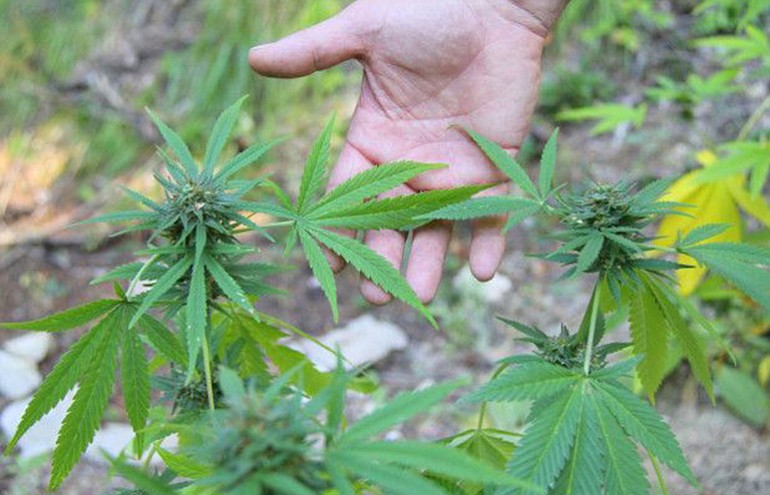The effort to keep marijuana out of the hands of children — and to treat those who become addicted nonetheless — is at a “critical juncture” in Washington state. And given this week’s votes to legalize recreational pot in Oregon and Alaska, Washington is leading the way for the whole nation.
That’s what professionals working on the state and local levels told approximately 100 people who turned out for a fundraising breakfast Thursday for Daybreak Youth Services, the only residential drug-treatment facility for youth in Southwest Washington.
There are complex funding and policy problems to be worked out by the next Legislature, said Annette Klinefelter, the interim executive director of Daybreak, and Jane Beyer, assistant secretary for behavioral health and science integration with the state Department of Social and Health Services. And there’s expected to be approximately $5 million in retail tax revenues on marijuana sales that can be spent on preventive education and treatment, Beyer said.
But all that money lags behind a need that’s growing rapidly right now, Beyer said, because of this year’s start of a new legal pot industry in Washington state — and the adolescent brain’s vulnerability to addiction. Recent science has found that developing brains really are very different from adult brains, Beyer said. Kids don’t anticipate and judge risk very well, she said; they’re not just “little adults.”
Legal only for adults
Knowing that has helped policymakers reverse course in areas such as juvenile justice, she pointed out, moving away from incarceration and toward rehabilitation and, ultimately, steering kids past trouble to begin with. Similarly, she said, the current moment presents a “great opportunity” for policymakers and the public to a greater understanding of youth addiction — how to prevent it and how to treat it.
The public buzz is all about how pot is now “legal,” Beyer emphasized, but that’s not the whole truth. It’s illegal for everyone under age 21. Some parents may be fuzzy on that fact, she said, but it needs to be stressed.
Beyer said that 77 percent of adolescents who are now in addiction treatment in Washington state reported that pot was their gateway drug. According to Daybreak, 90 percent of people who become addicted to drugs start before the age of 18.
“Nobody can underestimate or underemphasize how important prevention and education are,” Beyer said.
What also needs to be stressed, she added, is that addiction is a disease, not a moral failure. That knowledge is spreading, she said, but there’s still plenty of stigma out there too.
Beds needed
Daybreak is a private nonprofit agency that started in Spokane in 1978; today it offers both outpatient and inpatient treatment at facilities in Spokane and Vancouver. It has a total of 56 inpatient beds — but 34 of those beds are in Spokane and just 16 are in Vancouver. The Vancouver residential facility is open to boys only.
So it wasn’t available to Hannah, a 16-year-old who told the audience that her addiction to pot — and “anything else I could get my hands on” — landed her in juvenile detention in Longview for 13 days. That gave her time to “sober up and think,” she said, but it was the group and individual therapy that she received through Daybreak that got her the rest of the way to what’s been, as of Thursday, 111 days clean and sober. Daybreak has helped her master her own drug-use triggers and develop coping mechanisms, she said, and peer support was crucial to knowing that she was not alone.
Vancouver City Councilwoman Alishia Topper also stepped up to describe the sneaky way addiction affected her life. Her parents maintained and hid addictions to hard drugs, she said, but her younger sister wound up in serious crisis — homeless and a teen mother. No facilities were available for her, Topper said. (Fortunately, Topper said, physical fitness is her own personal addiction.) Her sister managed to turn the corner and is doing very well these days, she said.
But Topper said she is extremely concerned about the damage that legalized drugs may do to young people. “This is such a serious issue,” she said.
Bringing together
Part of Beyer’s talk traced the recent history of policy and budget decisions that have resulted in state-level cutbacks in funding for addiction treatment, especially for children.
During the Great Recession, she said, state programs that didn’t draw federal matching funds seemed like obvious choices for cuts. When Washington state opted to expand its Medicaid program as part of implementing the Affordable Care Act, she said, it resulted in new dollars for adults but not for children.
Two separate systems now cover mental health and chemical dependency treatment. But it’s pretty typical these days, Beyer said, to see “co-occurring” problems — mental illness and substance abuse — in both adults and children. The next Legislature will grapple with exactly how to bring all these needs and funding streams together in a way that addresses people’s problems holistically, she said, as well as how to determine the right Medicaid reimbursement rate.
Beyer said DSHS is doing a lot of deeply wonky homework now to figure that out. There’s a “fine line” between meeting real needs and justifying the cost to the federal government, she said.
“What is the real need going to be? Congress needs to know that rates are fair and reasonable,” Beyer said.





